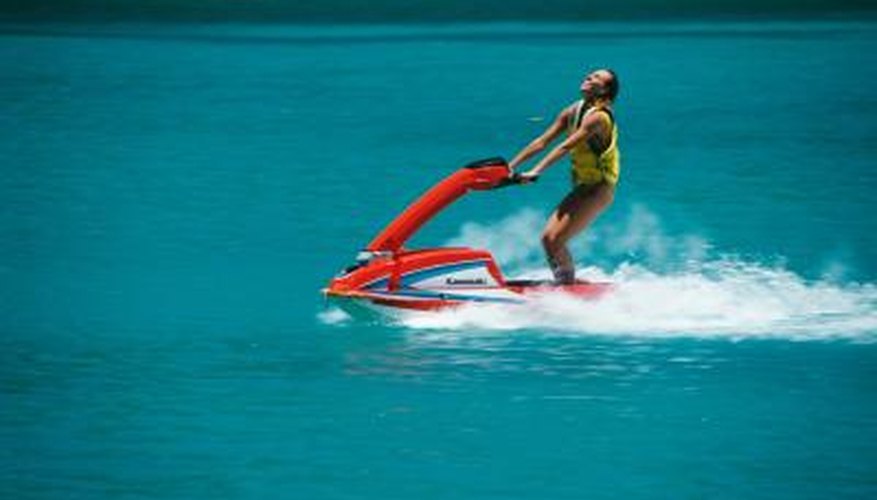
While common for a boat to take on some water during normal use, anything excessive means you have a leak. Unfortunately, leaks occur from a variety of causes. Finding a leak is going to require fully drying out the boat and engine compartment, putting it in the water, and putting your head in the engine compartment to look for any drip or leak. The following are some common causes of a Seadoo leak.
Drive shaft
To troubleshoot the drive shaft, pull it out and examine the carbon seal and collar. If they look damaged or not quite right, then replace with new parts. If the steel c-clip is missing, the boat will leak. Inspect the inner venturi nozzle on the jet pump, if both bailer tubes are not in the nozzle or are missing, then they need replaced. You also may have to replace the seal to the drive shaft if it's damaged in any way or missing.
Coolant system
Inspect the coolant system thoroughly. Check the engine coolant fluid levels. Read your Seadoo's manual and examine any diagrams and information regarding your particular coolant system. Compare your Seadoo to the manual. Make sure everything matches. if any parts are missing or damaged, they need replaced. Damage can be caused by heavy use, defective parts, misuse, or a clog from sucking up debris in the water. Check for blockage within the tubes. Inspect the coolant pumps for holes or defects and replace if found. Any damage or separation to where the coolant lines enter the boat can also let water in. Again, you may need to inspect the Seadoo while it is in the water to find the leak.
Exhaust system
A hole in the exhaust hose, broken hose, or loose hose connection can cause a leak. A common symptom of this leak is the boat sinking towards the handle bars. The exhaust system is attached to the engine's cooling system and muffler and exits the rear underside of the Seadoo. Common causes for holes involve the Seadoo sucking up debris, such as sea-weed. Any sucked up debris can plug up the cooling system and restrict the cooling of the exhaust system. Symptoms for this include engine running at lower RPM's, or beeping sound as the engine is warning of too high a temperature. Eventually, the heat will build up and the exhaust hoses can melt and burst. Check your cooling system for any clogs. Also If someone has worked on your Seadoo, they may have made modifications or repairs improperly. Mislaid exhaust hose will eventually split, melt, or burst. Damage may also occur to the muffler. Check the muffler for holes and defects.
Bilge Drain Plug
There should be an O ring around the drain to stop leakage. The plug is located on the bilge pump which is located inside the bottom of your craft and when operating properly pumps out excess water. Inspect your manual's diagrams to make sure everything looks right with the pump, plug, and O ring. If the plug is missing, or If the O ring is broken or missing - you will need to replace these parts before continuing use of your craft.
Hull
If you have a hull leak, then your boat will take on water without the engine running. Hull leaks can be caused by impacting debris that create cracks or holes in the hull. It can also be caused by something within the Seadoo bursting or melting. Check the interior and exterior of your craft for large dents and signs of damage as this may be the source of the leak.
Water pump
Run the boat on idle and watch the water pump. You could have a broken seal or a bad hose. A damaged pump assembly can force water into the boat. If the boat only takes on water while the engine is running, then this could be your problem.
References
Writer Bio
David Kazmer covers topics related to travel, health, fitness and politics. He studies English and writing at Kent State University, and has contributed to Sun News publications in Valley View, Ohio.



